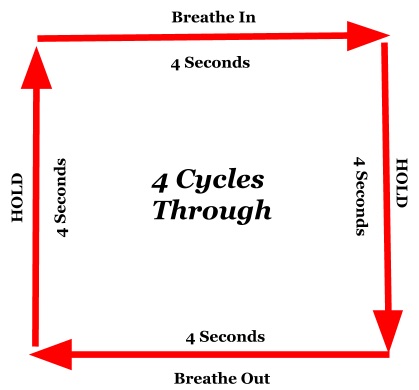
One New York Times writer suggested meditation as a good way to relieve stress. While some may doubt the benefits of meditation, this article suggests that it can be useful for anyone. Whatever your experience level, meditation can improve your mental and physical well-being. This article explains how to meditate. In addition, she gives tips on how to stay motivated while meditating. Meditation is a way to reduce stress and anxiety, improve concentration, reduce anxiety.
First, choose a location to meditate. There are many different meditation locations, including a wood-lined room or a yoga mat. Some people prefer to be seated on a stool or lying flat on their stomachs. You should find a neutral, comfortable place, regardless of what position you choose. Experts recommend listening and focusing on music that helps with relaxation. These classes can also be streamed online, which makes it much easier for people who cannot attend class in person.

Meditation can also be used for health reasons. However, it's important to find the right time and place for it. Often, you'll experience pain during the meditation process. You might feel a dull cramp in the back or a sharp pain in your leg. In this case, you should accept the pain and redirect your attention elsewhere. To alleviate pain, you may adjust your posture. Meditation should not take up too much of your time.
Meditation teachers are able to guide you through the learning process. Meditation classes teach people how to meditate in a safe and comfortable environment. Decorate the space with candles, plants, or candles. It's important to choose a quiet location. Meditation should be done in a quiet place. A calming song can help you relax when you are feeling stressed.
The purpose of meditation is to improve your health and well-being. Meditation is a great way to improve your quality of life and decrease stress levels. There are many forms of meditation. Some people use meditation to relax and enjoy it. This article from nytimes.com offers some helpful tips for meditation. An essential part of a meditation session is visualization. Focus on your thoughts, emotions, and how they affect you.

When starting a meditation course, it is important that you find a quiet place with minimal distractions. Avoid distractions and a noisy environment. This can make it more difficult to focus. In addition, setting a time limit can help you focus. Focusing on a 10-minute time frame can help you get more out of your meditation practice. Meditation is a good way to start. If you feel uncomfortable, it may be difficult to concentrate.
FAQ
What is the most healthful lifestyle?
Living a healthy lifestyle is one that encourages you to eat well, exercise regularly, get enough sleep, and avoids stress. If you follow these guidelines, you will be able to lead a long and healthy life.
Starting small can make a big difference in your diet, and even your exercise routine. Try walking for 30 minutes each day to lose weight. Swimming or dancing are great options if your goal is to become more active. You could also sign up to an online fitness platform like Strava, which tracks your activity.
What are the 10 most delicious foods?
These are the top 10 foods to eat.
-
Avocados
-
Berries
-
Broccoli
-
Cauliflower
-
Eggs
-
Fish
-
Grains
-
Nuts
-
Oats
-
Salmon
What is the best way to eat?
Your age, gender, body type, and lifestyle choices will all impact the best diet. Consider how much energy and low-calorie foods you consume, as well as whether or not you are a fan of fruits and vegetables.
Intermittent fasting might be an option for you if your goal is to lose weight. Intermittent fasting allows you to consume only certain meals per day, instead of eating three large meals. This approach may prove to be more beneficial than traditional diets that have daily calorie counts.
Research suggests that intermittent fasting may increase insulin sensitivity and lower inflammation. This can result in a reduction in blood sugar levels and a reduced risk of developing diabetes. Research suggests that intermittent fasting can promote fat loss and improve overall body composition.
Do I need calories to count?
You might wonder, "What's the best diet for me?" or "is counting calories necessary?" The answer to this question depends on many factors, including your current health, your personal goals and preferences, as well as your overall lifestyle.
The Best Diet For Me - Which One Is Right For You?
My personal health, goals and preferences as well as my lifestyle determine which diet is best for me. There are many good and bad diets. Some are better for certain people than others. What should I do then? How do I make the right decision?
These are the questions this article will answer. This article begins with a brief overview of the various types of diets that are available today. After that, you will learn about the pros and disadvantages of each type. The final step is to determine which one is right for you.
Let's start by taking a look at the various types of diets.
Diet Types
There are three main types of diets: low fat, high protein, and ketogenic. Let's discuss them briefly below.
Low Fat Diets
A low fat diet is a diet that restricts the amount of fats consumed. This is accomplished by decreasing the intake of saturated fats such as butter and cream cheese. It is possible to replace these saturated fats with unsaturated ones (olive oil or avocados). A low fat diet is often recommended for those who want to lose weight quickly and easily. This kind of diet could cause problems like constipation or heartburn and indigestion. In addition, it may lead to vitamin deficiencies if a person doesn't get enough vitamins from their food.
High Protein Diets
High protein diets are known to restrict carbohydrate intake and promote the consumption of proteins. These diets typically have more protein than other diets. These diets can help increase muscle mass and decrease calories. One problem is that they might not be sufficient to provide regular nutrition. Also, they tend to be very restrictive, so they aren't suitable for everyone.
Ketogenic Diets
Ketogenic diets can also be known as keto diets. They are high in fat and moderate in protein and carbs. They are commonly used by athletes and bodybuilders, as they allow them train harder and more frequently without getting tired. To avoid side effects such as fatigue, nausea, headaches, or other unpleasant side effects, you must strictly adhere to their instructions.
Why does our weight change as we get older?
How do you know if your bodyweight changes?
If there are less calories than muscle mass, then weight loss is possible. This means that daily energy needs must be greater than the calories consumed. Reduced activity is the leading cause of weight gain. Other reasons include poor eating habits, stress, hormone imbalances, certain medications and illness. Weight gain is when there are more calories than muscle mass. This happens when people consume more calories than they burn during the day. It can be caused by overeating or increased physical activity as well hormonal changes.
Our bodies lose weight because we eat fewer calories than we burn. The main reason we lose weight is because we exercise more often. This increases our metabolism rate and burns more calories each day. But this doesn't guarantee that we'll lose weight. All that matters is whether we're losing weight or gaining muscles. Weight loss is possible if you burn more calories than you consume. But if we're consuming more calories than we're burning, then we're actually storing them as fat.
As we grow older, we tend to become slower at moving around and therefore we don't move as much. We also tend to eat less food than we did when we were younger. We tend to gain weight. However, our muscle mass is more important than we realize and makes us appear larger.
There's no way to tell how much weight you've lost unless you weigh yourself every week. There are many ways you can measure your weight. There are many ways to measure your weight. You can check your waist, hips, thighs, arms and legs. Some people prefer to use a bathroom scale while others prefer to measure with tape.
To track your progress, weigh yourself once a week. Measure your waistline once per month. You can also take photographs of yourself every few years to track how far your progress has been.
You can also check your height online to find out how many pounds you have. You'd likely weigh 180 pounds if you were 5'10 tall and 180 pounds if you were 180lbs.
Exercise: Good and bad for immunity?
Exercise is good for your immune system. Exercise increases white blood cell production, which helps fight off infection. You also get rid of toxins from your body. Exercise helps to prevent heart disease and cancer. It reduces stress.
But, too much exercise can lead to a weakening of your immune system. When you exercise too hard, your muscles will become sore. This can lead to inflammation and swelling. The body then needs to make more antibodies to fight infection. The problem is that these extra antibodies can cause allergies and autoimmune disorders.
So, don't overdo it!
Statistics
- This article received 11 testimonials and 86% of readers who voted found it helpful, earning it our reader-approved status. (wikihow.com)
- According to the 2020 Dietary Guidelines for Americans, a balanced diet high in fruits and vegetables, lean protein, low-fat dairy and whole grains is needed for optimal energy. (mayoclinichealthsystem.org)
- In both adults and children, the intake of free sugars should be reduced to less than 10% of total energy intake. (who.int)
- WHO recommends consuming less than 5% of total energy intake for additional health benefits. (who.int)
External Links
How To
What does the term "vitamins" mean?
Vitamins can be described as organic compounds found in food. Vitamins help us absorb nutrients from foods we eat. The body cannot make vitamins; therefore, they must be obtained from food.
Two types of vitamins exist: water-soluble vitamin and fat-soluble vitamin. Water-soluble vitamins dissolve in water easily. Some examples include vitamin C,B1 and B2 vitamins (thiamine), B2 and riboflavin, B3 and B6 vitamins (niacin), folic acids, biotin, pantothenic acids, and cholesterol. Fat-soluble vitamins can be stored in the liver or in fatty tissue. Some examples include vitamin D and E, K, A and beta carotene.
Vitamins are classified based on their biological activity. There are eight major groups of vitamins:
-
A - Essential for healthy growth and health maintenance.
-
C - important for proper nerve function and energy production.
-
D - necessary for healthy bones and teeth.
-
E is necessary for good vision, reproduction.
-
K - required for healthy muscles and nerves.
-
P – vital for building strong bones.
-
Q - Aids in digestion and absorption.
-
R – Required for the formation of red blood vessels.
The recommended daily allowance (RDA), for vitamins, varies depending upon age, gender, or physical condition. The U.S. Food and Drug Administration sets RDA values.
For adults aged 19 and older, the RDA for vitamin B is 400 micrograms daily. Because it is essential for the development of the fetus, pregnant women should consume 600 micrograms per daily. Children ages 1-8 require 900 micrograms per day. Infants below one year old require 700mg per day. But, between 9 months to 12 months, the amount drops to 500mg per day.
Children aged 1-18 years need 800 micrograms daily, while children overweight require 1000 micrograms per days. Children who are severely obese or underweight will need 1200 micrograms each day.
Children between 4 and 8 years old with anemia will need 2200 micrograms daily of vitamin C.
2000 micrograms daily is required for adults over 50 to maintain their general health. Because of their higher nutrient needs, women who are pregnant or nursing need 3000 mg per day.
Adults over 70 require 1500 micrograms each day, since they lose around 10% of their muscle mass every decade.
Women who are pregnant, nursing or breastfeeding need more than the RDA. Pregnant woman need 4000 micrograms daily in pregnancy, and 2500 per day after childbirth. Breastfeeding mothers require 5000 micrograms daily when breast milk production is occurring.